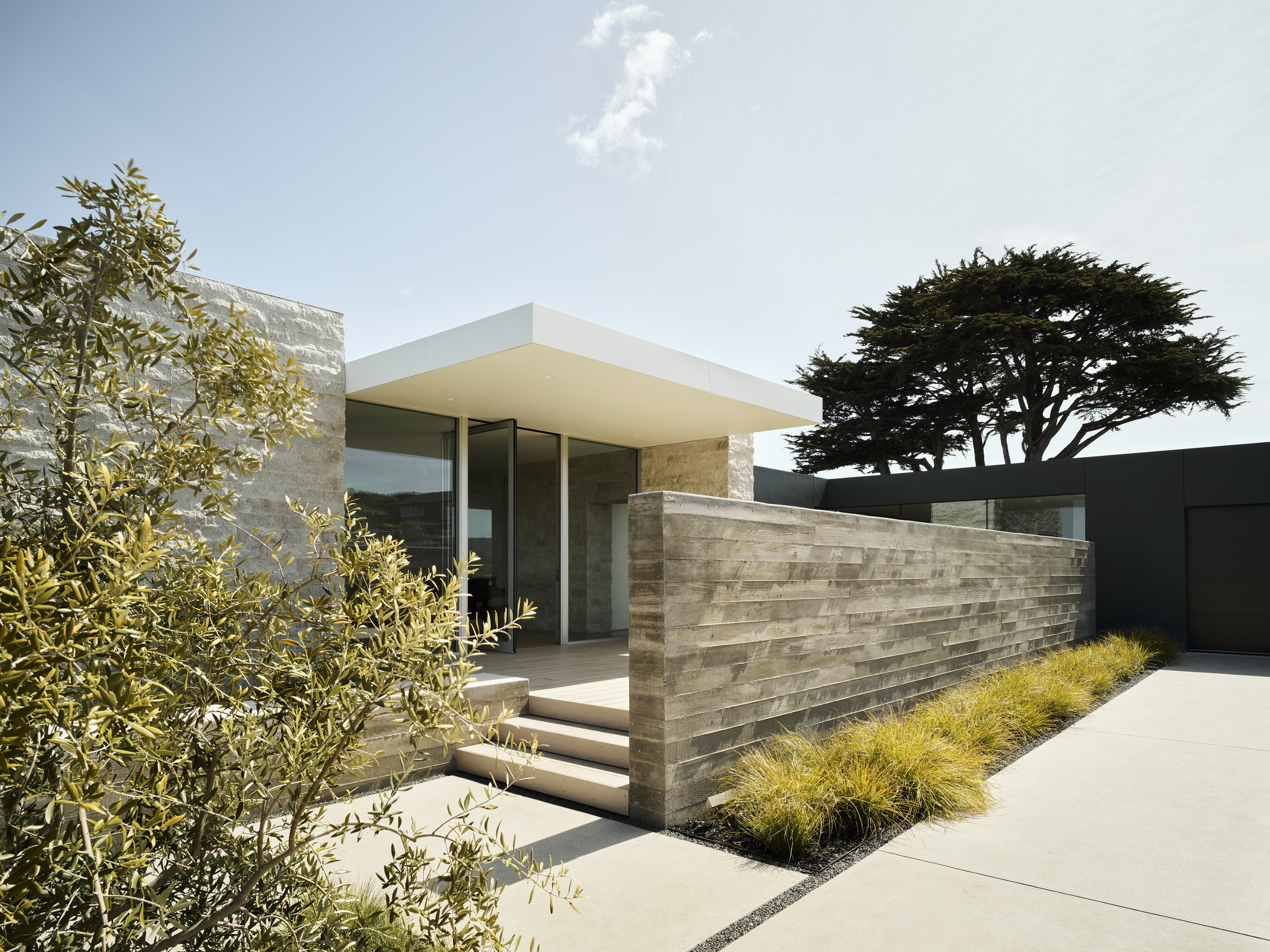Honor Award //project details Architect: Ehrlich Yanai Rhee Chaney Architects Project Location: Carmel, CA Photographer: Matthew Millman Drone image: Matthew Millman and Jonathan Mitchell The Ribera Road residence maximizes the
The post Ribera Road appeared first on AIA California.
Ribera Road
//project details
Architect: Ehrlich Yanai Rhee Chaney Architects
Project Location: Carmel, CA
Photographer: Matthew Millman
Drone image: Matthew Millman and Jonathan Mitchell
The Ribera Road residence maximizes the coastal site’s potential, elegantly provides both privacy and open social space, and consciously reduces energy use and ecological impact.
Perched above the Carmel River as it meets the sea, the home’s floor-to-ceiling doors and large windows embrace the fantastic ocean and valley views as the infinity pool and cascading series of outdoor decks encourages outdoor living. A tactile wall clad in warm sandstone not only supports the floating roof above but also divides the home in two, delineating between the open, boundary-free living area and cozy, private bedrooms.
As an extensive remodel built on a relatively low budget, the project reused the existing foundation and stayed within the previous building footprint, thereby reducing the impact of construction on the fragile river estuary. Large openings allow for abundant natural light and ventilation, while deep overhangs shield from solar heat gain. Hydronic in-floor radiant heating warms the home efficiently, while the pool is heated exclusively by solar hot water heaters on the roof. An 8.64kWh solar array meets much of the home’s energy demand and any excess solar energy is stored on site with a 27kWh battery backup system.
————————————————————————————
We would like to recognize the General Contractor, De Mattei Construction, who worked so diligently during the pandemic to finish the project.
//comments
Refinement! | This project is strong, very assured, and utilizes great materials, it has almost a Mies-ian quality. | This project has a beautiful connection to outdoor spaces.
//framework for design excellence measures
Measure 1: Design for Integration
The home’s full-height operable doors and windows promote natural cross ventilation, daylighting, and an indoor/outdoor lifestyle, while deep overhangs protect from direct sunlight. Skylights bring daylight to interior spaces like bathrooms, reducing artificial light use. Hydronic in-floor radiant heating warms the home more efficiently and at a lower per unit cost. The home’s ERV draws in fresh air while capturing the heat and moisture of exhausted air. A 8.64 kWh solar array powers much of the home’s energy needs, and 27 kWh backup batteries keep the home functioning during power outages. The pool is warmed exclusively by a solar hot water system.
Measure 2: Design for Equitable Communities
The project’s proximity to the beach and other recreational activities allowed the client to rely on E-Bikes and Scooters to get to enjoy their surroundings.
Measure 3: Design for Ecosystems
The client opted for a renovation instead of a full tear down and new build, which allowed the home to reuse the existing building foundation and stay within the existing footprint. This reduced not only the carbon footprint of the building, but also the impact of construction on the Carmel River outlet directly below the site. Drought resistant planting was used to elimante irrigation needs after establishment and also support local animals and pollinators. From all parts of the home and surrounding outdoor spaces, the beauty and importance of the unique landscape is immediately apparent and celebrated.
Measure 4: Design for Water
The site’s landscaping features drought tolerant plants, some of which are native, that do not require irrigation once established. Ultra high-efficiency plumbing fixtures and instant hot water for the kitchen limit water usage by occupants. The Project’s location and high performing building envelope allow the occupants to live comfortably year-round without air conditioning systems. This greatly reduces potable water usage for cooling. Similarly, heating is handled by a closed loop, hydronic radiant heating system. Combined, these strategies kept the project within the counties strict water credit requirements.
Measure 5: Design for Economy
Single-family houses in this coastal region often eclipse $1,800/sf in GSF construction costs, prompting the design team to find a creative solution to stretch budget dollars and keep the project at $1,100/sf during a period of extreme inflation. Materials were sourced at closer proximity to the project site to avoid shipping related disruptions during the global pandemic. In addition to cost management, some rooms were built to serve multiple functions, as three bedrooms was often not enough to sleep a family of 7
Measure 6: Design for Energy
By utilizing cove.tool modelling and MEP engineer consulting, the home at Ribera Road was able to reduce predicted energy usage to meet the 2030 Challenge goal. Large operable openings allow for natural ventilation, while an ERV ensures that the mechanical ventilation remains as efficient as possible. Floating overhangs protect from southern sun exposure. The home’s 8.64kWh PV system powers much of its energy needs, and excess power is stored in 27kWh backup batteries. Even the pool is heated exclusively with solar hot water heating. Radiant floors warm the home in an extremely efficient manner.
Measure 7: Design for Well-Being
The open living/dining space of the home, as well as each bedroom, are bound by operable doors and windows to allow for effective natural ventilation. These openings are shaded with generous overhangs to reduce solar exposure and glare. Cove.tool was employed to study sDA, which led to additional windows in the den and skylights in the bathrooms.
Measure 8: Design for Resources
The home at Ribera Road is an extensive remodel which reused the existing foundation, 50% of the exterior walls, and stayed within the existing home’s footprint. This allowed us to significantly reduce the need of new concrete and disruption of the building site.
Measure 9: Design for Change
With power outtages being increasingly more common in the area, the home at Ribera Road pairs an 8.64kWh photovoltaic array with 27kWh of on site battery storage. This allows the home’s essential components to remain in operation during power disruptions. An ERV with MERV 13 filtration ensures that the air in the home remains free from wildfire smoke during California’s ever expanding fire season. Drought tolerant plants were selected to eliminate the need for irrigation once the plants are established.
Measure 10: Design for Discovery
With a post occupancy planned soon, there are already items that could have been addressed differently and pieces of the home that have been tweaked. The temporary irrigation for the drought-tolerant planting was too heavy, and was flooding areas of the landscape. This watering was reduced and is now removed. The existing garage slab was reused, but its low elevation led to flooding during winter rains. In retrospect, a stem wall should have been installed. As the home salty ocean air has already began to effect some exterior door pulls. In the future, more durable finishes will be chosen
The post Ribera Road appeared first on AIA California.
AIA CaliforniaRead More





